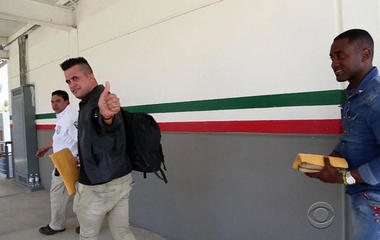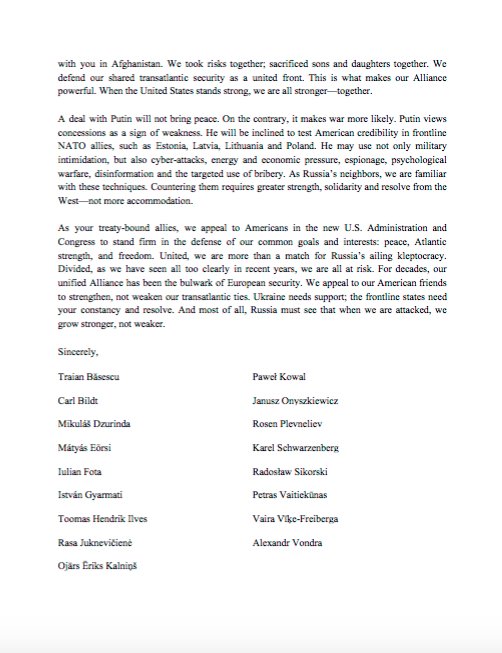New Clinton email files detail FBI-State tussle over Benghazi message
Politico: Newly-released records about the Hillary Clinton email investigation shed new light on an early dispute between the FBI and the State Department over the classification of an email discussing the aftermath of the 2012 Benghazi attacks.
The 299 pages of internal FBI records, apparently released over the weekend on the FBI’s Freedom of Information Act page, describe the bureau’s reaction to State’s protest of an FBI decision to classify a November 2012 State email discussing arrests in the Benghazi attacks.

The email was the first from Clinton’s private account and server to be publicly identified as “SECRET,” fueling arguments that Clinton and State had been careless in handling sensitive information.
Notations applied to the message when it was reviewed in 2015 show it was classified because of the potential impact on U.S. relations overseas. However, the newly-disclosed FBI communications messages show one official there argued that the message should actually be classified based on its potential to disclose intelligence “sources and methods”—a designation that could have raised red flags with the press and on Capitol Hill.
“The redaction lists ‘interference with foreign relations as the rationale.’ The crux of States [sic] argument is they know better what will impact foreign relations and there is no longer a government in place” in Libya, the unidentified FBI official wrote to Michelle Jupina, the FBI Assistant Director for Records Management. “The more appropriate rationale is sources and methods. While the email does not name the particular official, this might be deduced and, given the threat of violence in the region, any surmise could be fatal for whoever cooperated with us. State will say no one will know if it is redacted, but that is not how classification works.”
The message shows Deputy Secretary of State for Management Patrick Kennedy intervened with the FBI to dispute the classification at least three times: in a May 14, 2015, call to International Operations Division chief Brian McCauley, at an in-person meeting at the State Department five days later and in a phone conversation with the head of FBI’s Counterterrorism Division, Michael Steinbach.
The unnamed FBI author of the message to Jupina said Kennedy summoned various officials to State to discuss the review of 55,000 of Clinton emails requested under FOIA. At that meeting, Kennedy asked the FBI representative and a Justice Department FOIA official to “stay behind to discuss the FBI determination” on classification in the first batch of Clinton emails, the FBI email says.
An email from Steinbach said he turned down Kennedy’s request that the information be withheld solely under a FOIA provision for protection of law enforcement sources, rather than by classifying it.
“I explained to Mr. Kennedy that to only exempt for (b)(7)(D) was not appropriate as the information in the two portions in question was classified at the Secret/NOFORN level,” Steinbach wrote.
Even after that decision, the FBI got another high-level contact on the issue from State that same day, with Secretary of State John Kerry’s chief of staff Jon Finer calling Jim Rybicki, then-deputy chief of staff to FBI Director James Comey.
“Finer…stated that he was not attempting to change [Steinbach’s] classification decision, and said that he just wanted to make sure that FBI leadership was aware of the decision and the procedural process and media attention it would likely trigger,” Rybicki wrote in an email to several colleagues. “I relayed back to the State Department that leadership is aware of the review process and decision.”
Rybicki said Finer asked if the FBI could classify the information rather than State doing so at FBI’s request. When the email was released, State officials said they were withholding it at FBI’s request.
State Department spokesman John Kirby said on Monday that the new records demonstrate the department’s longstanding contention that it did not feel the specific document needed to be upgraded and that there were discussions among agencies about the issue.
“Classification is an art, not a science, and individuals with classification authority sometimes have different views. We have an obligation to ensure determinations as they relate to classification are made appropriately,” Kirby said in a statement.
He added, “With respect to Mr. Finer, the material recently released by the FBI makes clear that he did not contact them to change the classification of the email. On the contrary, this was routine contact to ensure appropriate leadership in both agencies were prepared to respond to questions. As is well known and was discussed publicly at the time, the State Department did upgrade the document at the request of the FBI when we released it back in May 2015.”
Some indications of the FBI-State dispute appeared in records released in October, leading then-Republican presidential nominee Donald Trump to argue on the campaign trail that Kennedy had proposed a trade-off where State would increase FBI staffing levels overseas if State withdrew its claim that the Benghazi-related email was classified.
The notion of such a quid pro quo apparently originated with a records official at the FBI, but Kennedy flatly denied it. In addition, McCauley said he did not believe Kennedy was proposing such a trade-off, although the pair did discuss both issues in a single phone call.
While the classification dispute over the Benghazi-related message appears to have been heavily litigated, it would wind up being just the tip of the iceberg. In a statement in July, Comey said 110 emails in Clinton’s account were classified at the time they were sent, with eight email chains considered “Top Secret” at the time they were sent and 36 chains containing “Secret”-level information. None of those messages was properly marked as classified, he said.
The newly-released FBI emails and memos also contain some other details about the Clinton email probe that have not been previously reported or received little notice:
–The Secret Service rebuffed the FBI’s initial request for assistance in the investigation, according to a memo which suggests some tensions between the two law enforcement agencies.
At a July 28, 2015, meeting, a Secret Service official “advised that his management told him that any FBI request for information or assistance related to this matter would need to come via written request from the Department of Justice to the Department of Homeland Security, which would then forward the request to the USSS,” an FBI memo said. After consulting with Secret Service managers about the requested assistance, the official “refused to identify [to the FBI] the specific USSS manager(s) to whom he spoke.”
The FBI eventually obtained information on the Secret Service’s assistance to former President Bill Clinton with security issues related to his computer server, which eventually became the one hosting Hillary Clinton’s much-discussed private account.
–The FBI apparently took a week to notify the Justice Department after receiving a formal referral from the Intelligence Community Inspector General about the Clinton email matter in July 2015. A memo from Deputy FBI Director Mark Giuliano says the FBI got the referral on July 6, formally opened its full investigation on July 10, and first advised Deputy Attorney General Sally Yates on July 13.
–The investigation itself was treated as classified at its outset, but was declassified in August 2015. Internal FBI memos say it was determined that an initial batch of emails from Clinton’s account released by State under FOIA contained “Top Secret” information. The memo declassifying the investigation says that information was deemed not to be so sensitive that it could not be discussed more widely. “No previously unknown sources or informants were revealed in the identified material…. No sensitive sources or methods were disclosed.”
–The email investigation was also designated as “sensitive” and its records were closely-held at the FBI because of Clinton’s status as a political candidate.
–The FBI obtained a special “one-time” approval to show Clinton confidant Sidney Blumenthal a copy of one of his own emails to Clinton about the political situation in Kyrgyzstan. A January 5, 2016, FBI memo says the email has “since been deemed to contain classified FBI information.” The “SECRET” portion of the April 2010 message relates to what Blumenthal called an “ongoing criminal investigation.”
–An internal FBI profile of longtime Bill Clinton aide Justin Cooper derived information from a publication of the conservative watchdog group, Judicial Watch. The group had tracked Cooper’s links to Teneo Holdings, a consulting firm founded by individuals with close ties to the Clintons.
 Go to this map for more information.
Go to this map for more information. 


